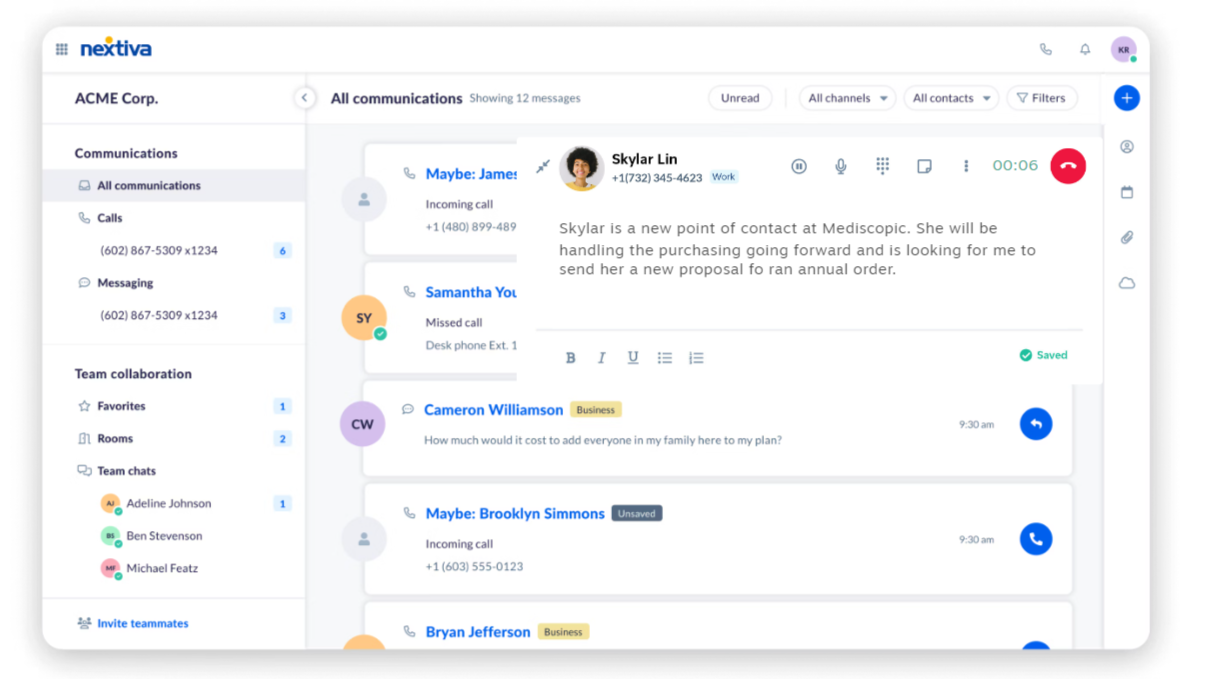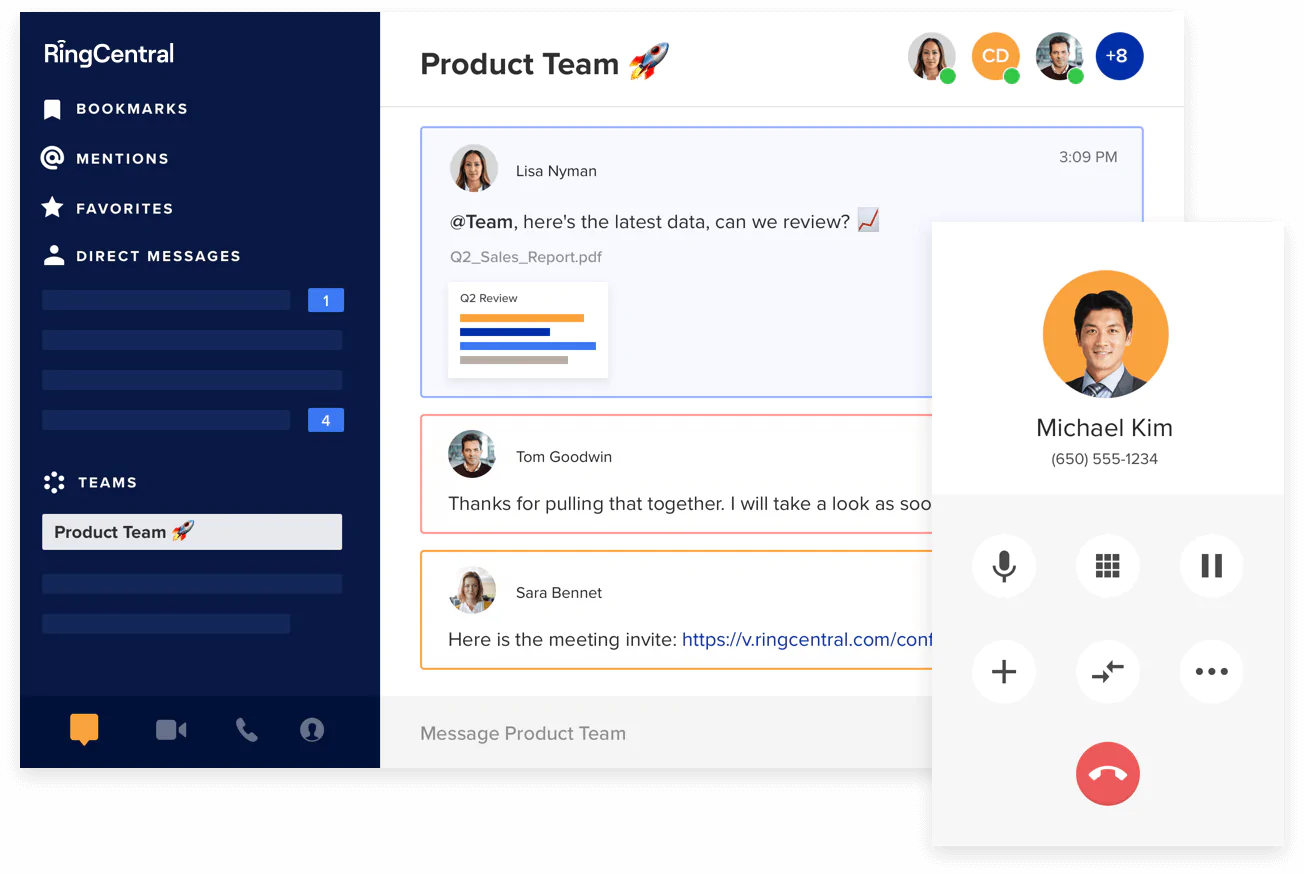The softphone feature allows tablets, laptops and mobile devices to make and receive calls as if they were a traditional desk phone. It is a VoIP option that allows users to use the devices they already have to make calls from anywhere there is an internet connection.
This offers a company some key benefits, especially when combined with other business tools to create a unified communications platform.
When implemented optimally, companies can use softphones to add contacts from other apps, automate tasks, create follow-ups, improve workflows, manage seasonal fluctuations, and scale up or down as needed.
How to turn any device into a softphone
Almost any device can be turned into a softphone, but older devices may experience performance issues. It is best to check the system requirements for hardware and connection before deciding to adopt a softphone.

Once you know you have compatible devices, all you need is an internet connection, a VoIP subscription, and the service provider’s app installed on your device. Check out our list of the best VoIP phone services to learn about all your options and what to look for when making your decision.
Now all you have to do is download the app, start it and log in. Some services require you to confirm your phone number with a code, while others require you to confirm your email address.
Most VoIP providers will walk you through quick configuration settings before your first call. You can adjust audio and video settings, set up notification preferences, and familiarize yourself with the user interface.

Softphones vs. Wi-Fi calling
Both softphones and Wi-Fi calling use the Internet to make calls, but they are not the same thing.
Wi-Fi calling is available from some carriers like Verizon and T-Mobile. It lets you make regular phone calls over Wi-Fi when your 4G or 5G connection isn’t strong enough.
I inadvertently use it all the time since cell reception is spotty where I live. It ensures smooth call quality by seamlessly switching between WiFi and my cellular network when needed.
A softphone is similar but requires a VoIP subscription.
Softphones require some form of internet connection – it doesn’t necessarily have to be WiFi. VoIP can run over a WiFi connection, an Ethernet connection, or a cellular network. You can also use softphones on a tablet or desktop, where WiFi calling is limited to your mobile phone.
Softphones are better for businesses
Unlike traditional desk phones, softphones allow you to easily connect to other business tools your team uses every day. When all your software is seamlessly integrated, employees don’t have to switch between systems to find what they need.
Softphones can retrieve information from CRM software, collaboration tools, email clients, customer service software, and more.
All of this information and much-needed context is then easily accessible through the same interface. For example, when an agent receives a call, they can quickly see who the caller is, what previous purchases they have made, and the transcript of their last interaction.
You don’t have to enter the interaction unprepared, which leads to a significantly better user and customer experience.

Businesses also benefit from a wide range of other VoIP features with their subscription, including:
- Conference calls.
- Call forwarding and transfer.
- Voicemail transcription options.
- Customizable call forwarding rules.
- Real-time analytics and reporting.
- Insights into call duration, user activity and call volume.
- Accessibility features such as voice commands, text-to-speech and screen reading.
With a softphone you get a full-fledged telephone system with all the tools your business needs.
Are softphone systems easier to manage?
Administrators can manage user settings, permissions, and softphone configurations from a central interface. This means they can update software remotely, help users resolve issues, and make quick adjustments without the user having to wait or interrupt their work.
Adding new users to a softphone system takes just a few clicks. And unlike physical hardware, softphone systems can also be maintained and updated without the need for on-site technicians.
Is it cheaper to switch to a softphone VoIP provider?
Yes, for many reasons. First of all, VoIP subscriptions are usually significantly cheaper than traditional landline or on-premises systems. VoIP also offers lower international rates, making it an attractive option for businesses that regularly make calls worldwide.
A VoIP system and softphone functionality also means you don’t need to buy physical phones. Outdated hardware and miles of phone cables are a thing of the past. Additionally, you don’t need to worry about infrastructure maintenance as this is taken care of by your VoIP provider.
Are there any disadvantages to softphones?
Softphones have many advantages, but they also have their weaknesses.
Stable connection required
Softphones are only as reliable as your internet connection. You don’t need the fastest network in the world, but it needs to be stable enough to send, receive and decompress data packets.
Just like a patchy cellular network, a poor internet connection can result in dropped calls, significant delays, and even echoes.
Network congestion
Network congestion can also affect call quality, especially for larger businesses. Simultaneous calls, browsing the web, streaming a video, sending an email, or downloading a large file can all impact your network.
You can tweak Quality of Service (QoS) settings to prioritize VoIP traffic as a starting point. This means that the network will pause other activities when necessary to maintain call quality. This can be frustrating for users who have to wait, but it’s a small price to pay for a consistent customer experience.
If adjusting QoS settings doesn’t help, you may need a separate network specifically for your phone system. While this will ensure high-quality calls, it can be expensive.
Integration with legacy systems
Softphone systems integrate well with modern business apps, but companies with complex or customized legacy systems may need help.
For example, integrating with a bespoke CRM or proprietary communications system may require a developer or be impossible. If you don’t have anyone on your team who knows APIs and code, connecting tools can be harder than expected.
Regulatory concerns
Some companies are required by law to use traditional telephone systems.
For example, the US healthcare and financial sectors must meet certain criteria for communications and data security. For many, a traditional system may be the only way to ensure compliance with these requirements.

